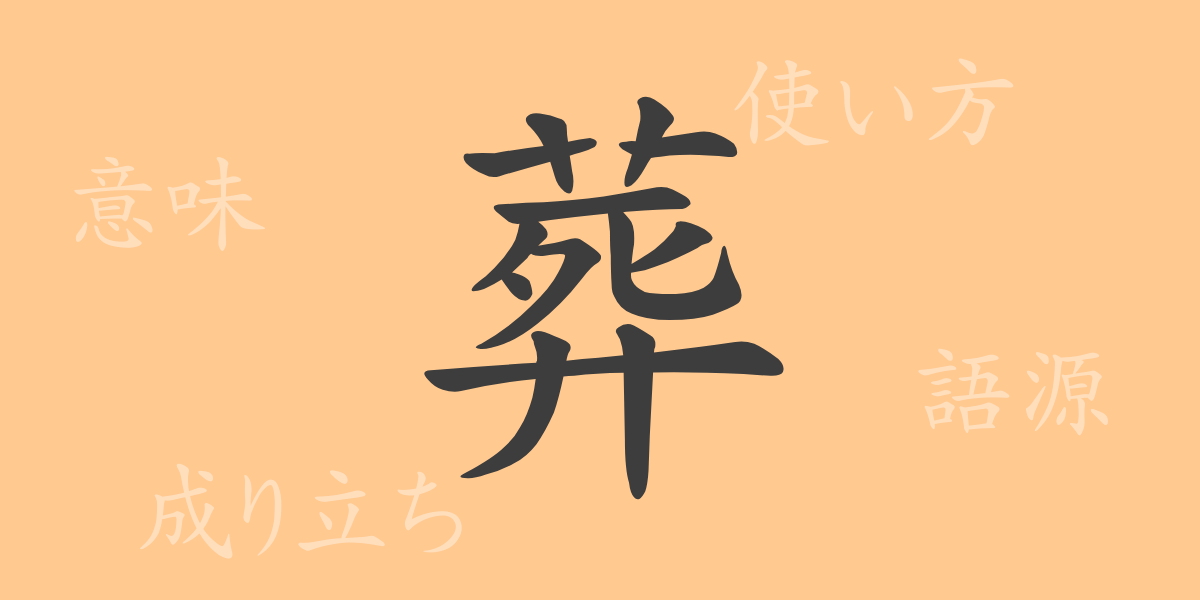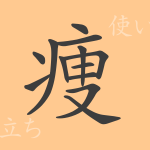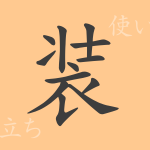Life and death are eternal themes for humanity. In the world we inhabit, countless lives begin each day, and many depart. In Japan, the ceremony to mourn the deceased and send them off is called ‘葬’ (そう, Sō). This article focuses on the Kanji ‘葬’, exploring its origins, meanings, applications, and the phrases associated with it, delving deep into its profound cultural significance in Japanese society.
Origins of 葬 (そう – Sō)
The Kanji ‘葬’ originates from ancient Chinese script. It was initially formed by combining the radical for ‘earth’ (土), symbolizing burial, with ‘死’, which means death. Over time, this character evolved to encompass not only the physical act of burial but also the rituals associated with mourning the deceased.
Meaning and Usage of 葬 (そう – Sō)
‘葬’ primarily denotes the acts associated with burial and mourning rituals. It is commonly used in terms such as ‘葬式’ (そうしき, funeral) and ‘葬儀’ (そうぎ, funeral ceremony), referring to the procedures and customs surrounding the departure of the deceased.
Readings, Stroke Count, and Radical of 葬 (そう – Sō)
The character ‘葬’ offers insight into its structure and significance in the Japanese language:
- Readings: On’yomi (音読み) ‘ソウ’ (Sō), Kun’yomi (訓読み) ‘ほうむ.る’ (hōmu.ru)
- Stroke Count: ‘葬’ consists of 14 strokes.
- Radical: The radical is ‘艸’ (くさかんむり – kusakanmuri), indicating its association with plants, reflecting the earth used in burial.
Phrases and Idioms Using 葬 (そう – Sō) and Their Meanings
Several phrases and idioms incorporate ‘葬’, each reflecting aspects of Japanese funeral culture and attitudes towards death:
- 火葬 (かそう – kasō): Cremation, a method of disposing of the body by fire.
- 埋葬 (まいそう – maisō): The act of burying a body in the ground.
- 海葬 (かいそう – kaisō): Sea burial, a method of submerging the deceased in the ocean.
- 葬送 (そうそう – sōsō): The act of sending off the deceased, referring to the funeral.
- 送葬 (そうそう – sōsō): The ceremony of sending off the deceased at a funeral.
These terms vividly illustrate Japanese cultural practices and philosophical views on death.
Conclusion on 葬 (そう – Sō)
The Kanji ‘葬’ encapsulates deep meanings intertwined with culture and history, symbolizing the rituals we perform to mourn and remember those we have lost. Through these rituals, we accept death and keep the deceased alive in our hearts forever. Understanding ‘葬’ deepens our appreciation of Japanese funeral customs and perspectives on life and death.

























